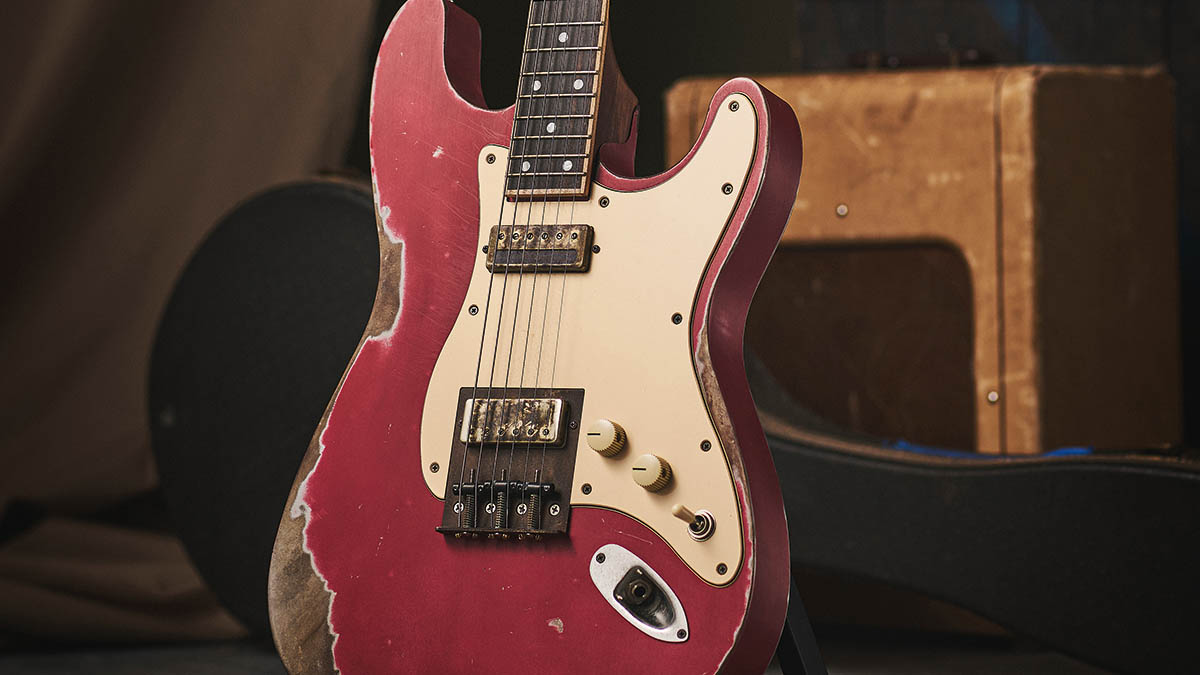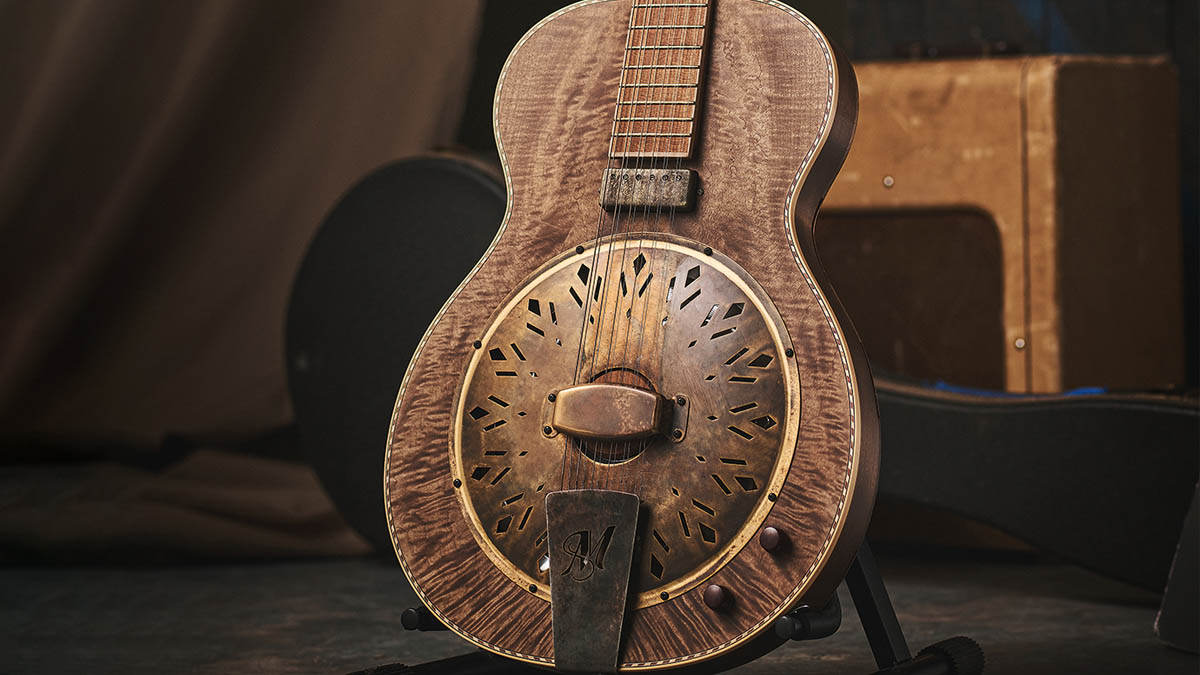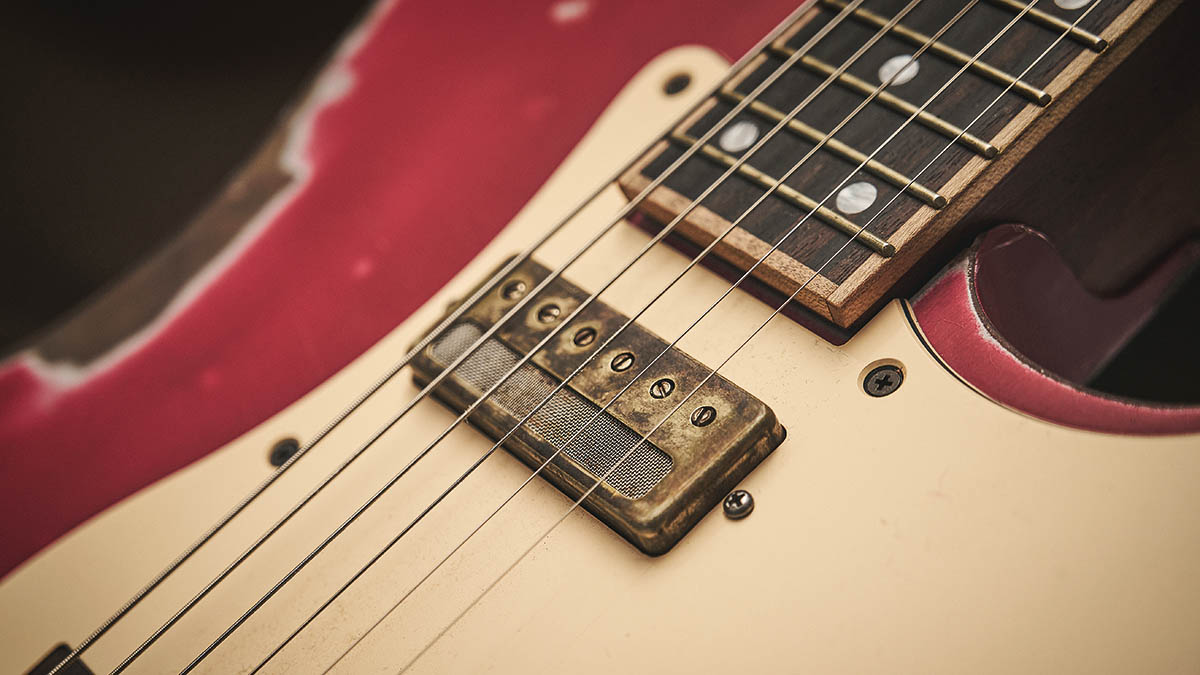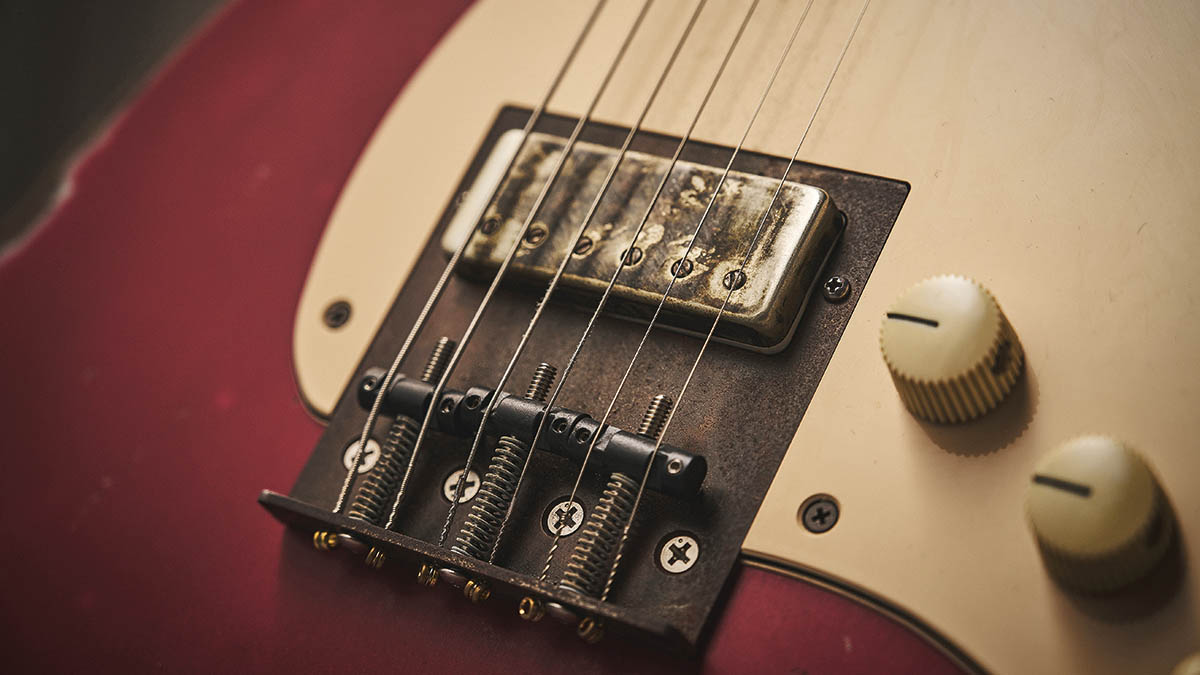
Resonator guitars occupy an unusual place in guitar mythology. Nearly all players find them attractive as iconic designs – and it’s hardly a surprise as they not only conjure up the world of pre-war Delta Blues but also troubadours of the rock era such as Rory Gallagher.
Despite this allure, however, they are often pigeonholed as niche instruments that are only good for playing slide on. Thus, though they occupy a hallowed place in our imaginations, they’re much less often found in the average player’s guitar collection than flat-top acoustics.
This is rather a shame as a good resonator can work so well for fingerpicking – as in Mark Knopfler’s intro to the Dire Straits track Romeo And Juliet. And that’s something not lost on a newer, post-White Stripes generation of guitarists who have drawn on the folk, blues and roots music of America to carve out a latter-day take on the gutsy, emotive blues recordings of the 30s.
For such players, a resonator is not a quaint antique but a powerfully expressive instrument with a punch, resonance and percussiveness that commands attention.
One such artist is Chris Turpin of the band Ida Mae. Drawing upon deep musical roots in blues, folk and country, the band’s new album, Thunder Above You, is somehow powerfully contemporary yet as authentic and soulful as any Memphis-waxed 45.
And a key component of that sound is Chris’s use of resonator guitars, brought up to date by the progressive design and hand-crafted features of his Mule Resophonic Guitars ‘Mavis’ model thinline resonators in both six- and, more recently, a 12-string guitar.

Chris joins us to explain why he feels that, with shrewd design updates, resonators deserve a renaissance and that Mule guitars lead the way in offering modern players vibey old sounds in a guitar built for the modern stage.
“I’ve had a love affair with resonators since forever,” Chris explains. “It started through [listening to] the folkies and going to Norwich Arts Centre and watching people like Bert Jansch and Martin Simpson play slide, and when there were a couple of bluesers that would come through and they would play resonators, I was just like ‘Ah, what is that?’
“Then, of course, I eventually stumbled upon Rory Gallagher playing Pistol Slapper Blues and I kind of fell into the blues and folk through Zeppelin and The White Stripes and all of that when I was about 14 or 15.
They’re weighty instruments! When Instagram first started, I think I was one of the only young people really playing a resonator
Chris Turpin
“So when I had the money, almost had the money – when we started our band… it may have been when we got the advance from Decca, who we were signed to at the time – there was a New Year’s Day sale on Denmark Street in one of the shops there. I went down and picked up my first National and I just loved it.
“But having toured with them so much and getting a little older, they’re quite heavy. They’re weighty instruments! When Instagram first started, I think I was one of the only young people really playing a resonator.”
Heavy Metal
Chris says that he found fresh inspiration in the upfront, almost brash sound of traditional resonators – but also their ability to be played with breathy delicacy when you back off with your right hand.
The only trouble was, metal-bodied Nationals and the like, while vibey and potent sonically, are heavy beasts that are sometimes troublesome to play loud and amplified when drive pedals are kicking the amp into an ecstatic howl.
This problem was especially trying for Chris as he really loves playing 12-string resonators, so redolent of Lead Belly’s blues sound but even heavier to wield on stage and yet more complex in timbre than a standard resonator.

“I got a few followers from the fact people were interested in [my use of resonators],” Chris continues.
“But then I saw this company ‘Mule Resophonic Guitars’ pop up [in my feed] probably close to 10 years ago. I can remember – before we’d done anything as Ida Mae [Chris’s previous band was Kill It Kid] – I messaged Matt at Mule saying, ‘Hey, do you make resonators? Are they any lighter than the standard fare?’ And he said ‘no’ [laughs]. And that was the end of that.
“So I carried on working with National and playing my 12-string until he came out with this Mavis guitar. I’ve seen various versions of smaller-bodied resonators and semi-acoustic resonators that I hadn’t really bonded with; there’s something about a resonator that has to be big and chunky and have some weight.
“He came up with this Mavis, which has that width of an acoustic guitar and I said, ‘Hey, I think I need to try one of these’ – and that’s how we got talking and he put together that guitar with a microphone in it, which he’d only done once before… I took it on the road and fell in love with it. And my lower back fell in love with it! And so me and Matt got talking.”

Making Mavis
Here, Matt Eich, Mule Resophonic Guitars’ founder, takes up the story. The Michigan-based luthier explains that his interest in guitars began when he took up playing the instrument himself, but he found his true calling after attending the Roberto-Venn School of Luthiery. His design philosophy couldn’t be further from the kind of ‘jewellery maker’ approach to guitars that is sometimes associated with small-volume luthiers.
While all of his instruments are laden with antique-feeling features and hand-crafted styling details, Matt says he wants his guitars to be played without any tip-toeing around; he wants players to connect with them as hard-working tools before they even get as far as admiring them as the beautiful pieces of lutherie they are.
His six-string Mavis model, fitted with a mini-humbucker at the neck and an internal microphone, was just the kind of rugged but expressive tool-instrument that fitted a player such as Chris perfectly.

“The Mavis guitar is a solidbody guitar,” Matt explains. “The back of it is roasted basswood and the top is roasted maple and the neck is roasted maple. All that wood we get from American Specialty Hardwoods here in Michigan, so all of our wood except the ebony fingerboards comes from them.
“I use roasted maple because it’s stable and it’s got a really beautiful colour that takes a stain really well and when you cut it, it smells like barbecue – which is one of my favourite things [laughs]. It also makes them lighter and when you’re talking about making a resonator guitar that definitely helps. I forget what they weigh off the top of my head, but I think it’s like 6.5lb or 7lb or something like that. So that’s what they’re made out of.”
Hard-working Mules

Though driven by the aforementioned a desire to make hard-working tools for musicians, Matt is far from being a slouch aesthetically and the first Mavis he sent to Chris features a beautifully aged-looking tortoiseshell pickguard, vintage-looking purfling and a charming inlay of a mule at the crown of the headstock.
Combined with its progressive features, the resulting guitar has the soul of an 80-year-old instrument but the handling of a modern electric. However, witnessing Chris playing the six-string version of the Mavis almost instantly convinced Matt that he should design an all-new 12-string version to go with it.
“When we got Chris that Mavis and seeing what he did on it, it was so exciting, especially his video for Carter Vintage [the prominent US vintage guitar retailer],” Matt explains. “I’m not sure if he then asked again about a Mavis 12-string, or what the catalyst was, but whoever it was who asked, it was just like, ‘Yes, absolutely, it must happen.’ You know, whatever we have to do to hear what Chris could do… what he could find in a 12-string with a semi-solid body.

“I don’t want to say he was the only man for the job. But it was really kind of inspired by his ability… and that irreverence, where it was just like, ‘I just need a tool, man – I’m gonna throw it in the dirt, I’m gonna do what I need to do with it. It doesn’t really matter.’
“You know, it doesn’t have to be something in particular, he’s going to be able to find something cool in it. And so that’s how the 12-string Mavis came about. It was inspired by a player, just like the original Mule tricone resonators were [inspired by] listening to Kelly Joe Phelps until I was like, ‘You know, I need to make this tool,’ and then seeing Chris play was like, ‘I need to make this tool.’
Matt was more or less new to making 12-string resonators, which spurred him to be open-minded and innovative in his approach to designing the guitar. Though its body would be little deeper than that of a standard Telecaster or similar, Matt and Chris wanted the 12-string to have a direct, punch-in-the-gut resonant connection to the player. And, to that end, Matt decided to fit what was effectively a soundboard on the back of the guitar.
Unlike a flat-top acoustic guitar, the 12-string Mavis didn’t need to produce hi-fi quality acoustic performance, but it did need to have a bold, resonant character when unplugged.
The microphone pickup [on my six-string Mavis] is a really interesting addition because it allows so much more detail of your right hand to come out when you’re not playing with overdrive or at volume
Chris Turpin
“Yeah, he wanted to put a resonating backplate on it,” Chris explains. “So it has a spruce top on the back of the guitar and you get a lot of acoustic volume out of it. And that really resonates and moves and you feel the whole guitar shaking as you’re playing it, especially when you run it through an amp like I have been with overdrive at volume – the whole thing becomes an alive experience. That’s the main thing he’s done, then the volume of tones are in a different place to where they were on the [six-string] Mavis.
“Also, the neck profile was chunkier. I said, ‘I’ve played old Stellas and stuff – I can deal with a big neck. Do whatever you think [works best].’ The neck also has quite a decent break angle on it so there’s quite a lot of snap to the notes. Some 12-strings can feel a little lacklustre and elastic-bandy, but this doesn’t feel that way,” Chris adds.

Live & Loud
The final piece of the puzzle was to find the right way to amplify it. Matt says the 12-string’s inherently bold unplugged sound makes it great for writing and noodling on at home, but, above all else, the guitar had to perform reliably well when amplified on stage.
I’ve messed with lots of different pickups in resonators over the years and I think all of them are somewhat of a terrible compromise, whichever route you go down
Chris Turpin was able to offer his insights from life on tour and, in the end, both designer and player agreed that magnetic pickups offered the best balance of sonic performance and rugged simplicity. Handily, Matt winds his own pickups and his mini-humbuckers have proven the perfect choice for the 12-string Mavis and other resonators.
“I’ve messed with lots of different pickups in resonators over the years and I think all of them are somewhat of a terrible compromise, whichever route you go down,” Chris Turpin laughs. “And trust me, I have tried every different type and people say ‘this, this and this’ and ‘this preamp system’ and none of this has worked for me other than the Hot-Plate pickup that National use, which is just a Tele-style pickup or a P-90 in the one I have. So [for me, the best solution is] just a magnetic pickup into the amp.
“Matt winds his own incredible mini-humbuckers, which have a very unique sound because I’m not a fan of mini-humbuckers in general. I’m not sure what he does to his that makes them so special, but that’s why we’re using them on the 12-string. But the microphone pickup [on my six-string Mavis] is a really interesting addition because it allows so much more detail of your right hand to come out when you’re not playing with overdrive or at volume.”
This flexible character gives Chris’s six-string Mavis model a broad utility that is a far cry from the stereotyped image of the resonator as a blues-and-slide only instrument. However, Matt Eich says he has a possibly controversial opinion to share about the best pickup systems to use for acoustic guitars.
“When you plug in a guitar, whether it’s got a spruce top and Brazilian back and sides, or it’s a mahogany solidbody guitar, if you put a pickup on it and you put it into an amp or a PA, it is now an electric guitar,” Matt argues, with a wry smile. “When you plug our tricone resonator with a mini-humbucker into an amp, it sounds like that tricone coming out of the amp.

“When you plug in a Mavis with a mini-humbucker into an amp, the Mavis does not sound anything like the tricone amplified, except that you can tell it’s a resonator guitar. And so my approach to [amplifying] those guitars was [to embrace the idea that] the electric guitar pickup offers the best balance between getting volume without feedback but also representing the sound of the instrument.
“Now, a mini-humbucker fitted to a resonator is not going to sound like a mini-humbucker on a Les Paul – and I tried all the different types of pickups on these guitars when I was making them. For example, fitted to a resonator, a PAF does not sound like it would on a normal electric guitar.
“I discovered that some pickups gave you too much of something and too little of something else – but the mini-humbuckers seemed to offer the best balance and [faithful] representation of that particular instrument.
So I think my approach to that is letting those electric guitar pickups be the great solution that they are. In my opinion, the problem of amplifying acoustic instruments was solved with the invention of the [magnetic] electric guitar pickup,” he concludes with a mischievous grin.







